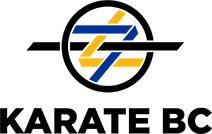Mr. Fusajiro Takagi, General Secretary of the JKF and Secretary General of WUKO (now WKF) introduced me to Arakawa sensei in 1989. I had been practicing JKA Shotokan for 20 years and wanted to learn a new style from the viewpoint of judging kata in international competitions. To my surprise, I discovered I had been sent to a Wado teacher and was rather disconcerted. Mr. Arakawa stepped out of a taxi wearing a karate gi, belt and tweed jacket in the middle of Shibuya, a swarming area of Tokyo and spotted the gaijin waiting for him in front of Tokyu Plaza. The taxi wound its way endlessly through tiny, convoluted streets and finally stopped at a primary school: Sarugaku Sho Gakko. Walking into the school gym I was motioned to change clothes in a cockroach infected, dusty storage space below the school stage. I did so and climbed the stairs to face a room full of male, Japanese black belts and one white belt. Deep breaths and walk slowly to the side where the white belt was. Class started and I never looked back.
I didn’t know then that Mr. Arakawa was a very well-known national and international figure, a graduate of Nippon University and direct student of Hironori Ohtsuka, the founder of Wado Ryu. I didn’t know that he had helped to create world champions, to introduce Wado karate to Europe and was Vice President of the JKF. I didn’t know that he had refined and demonstrated the Wado versions of the kata Seishan and Chinto as Shitei kata for the WKF. He later served as president and technical director of JKF Wado Kai. I just felt that the man was an amazing teacher and the style of karate he taught was irrelevant. I stayed with him for the next eight years, practicing three days each week, attending seminars and summer camps, weddings, parties and his Kanreki, (60th birthday celebration). I also spent many hours with Mr. Arakawa and his students in local izakaya (tapas bars), pubs and karaoke bars, where Mr. Arakawa would sardonically chuckle whenever anyone asked him if the gaijin (foreigner) sitting next to him could eat Japanese food and use chopsticks, particularly as that is usually what said gaijin was doing at the time. He had a dry sense of humour, which was evident usually in his lack of words. He did not waste them. He was a logical, principle-based technical teacher, explaining not only the what, but also the why and the how so that anyone could improve a technique. From my viewpoint, he taught all who entered his dojo with the same amount of patience and respect if you were there to learn. He taught children, beginners, 7th Dans and high performance athletes. It was all the same to him. He could help anyone refine their karate.
I succumbed to fate and joined JKF Wado Kai as a member of Arakawa dojo in 1990. At Arakawa dojo I met Kaki Kawano 5th Dan JKF Wado Kai, whom I introduced to Shawna Escher, previous Canadian and Junior Pan Am kata champion. They remain married. Kaki introduced me to Dr. Hideho Takagi, instructor of Guseikai. I immediately saw another technical genius so I also studied with Dr. Takagi at his dojo, Guseikai four days a week for about seven years. Amazing opportunity for me personally to study with two of the best technicians JKF Wado Kai had to offer seven days a week. I took full advantage of the opportunity. Both Mr. Arakawa and Dr. Takagi encouraged me to establish JKF Wado Kai in Canada (CZWKA), which led to visits from Mr. Arakawa here in Canada. Many of our members across the country had the opportunity to meet and study Wado Ryu karate with this great teacher.
The karate world has lost a valuable icon. Our condolences go out to his family.
Norma Foster
President, Karate BC

